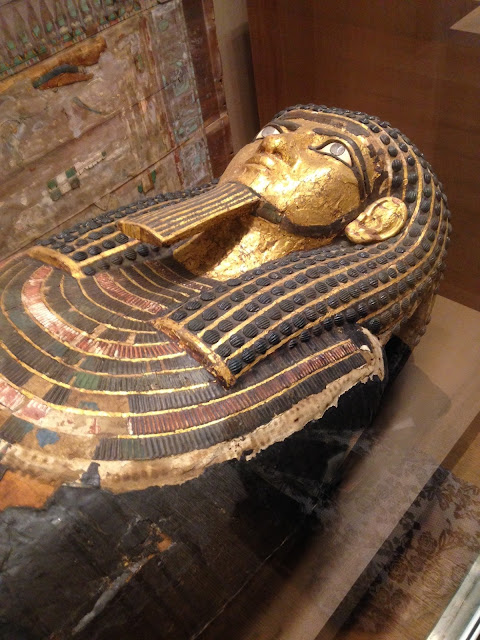Day 404 - "The Grand Tour"
February 27, 2025
As I scanned the roomful of portraits and paintings of classical and religious subjects in Gallery 627, along with the two large Panini works that were the subject of Day 239, I wondered what in the world the unifying theme of the gallery could be. The introductory sign is entitled "The Grand Tour" and notes the importance of a trip to Italy in the education and formation of the young gentleman. The Panini paintings certainly exemplify that theme. But really, a better title would be "Artists Who Moved to and Died in Rome (or in Naples)." With the exceptions of Angelica Kauffmann and Anton Raphael Mengs (whose portrait, discussed on Day 238, has been moved here), most of these artists , who include Francesco Trevisani, Pierre Hubert Subleyras, and the two painters whose works are the subject of today's entry, were unknown to me.
I'm struck by Pierre Jacque Volaire's rather small (perhaps 48 inches across and 28 inches high) 1776 oil painting entitled "The Eruption of Vesuvius, a View of Naples Beyond." At the right side of the composition, fiery red smoke and lava flows arise from the caldera into the night sky, which is otherwise illuminated by a cloud-shrouded full moon that hovers over the tranquil bay. In the foreground, small human figures watch the scene - though it strikes me that they'd have to be crazy to stand so close to the raging inferno. The wall sign notes that human awe in the face of the overwhelming power of nature is characteristic of the aesthetic known as the Sublime, a key feature of Romantic landscapes. It's a useful thumbnail definition of the Sublime for me. The sign goes on to say that Volaire, who was was born in Toulon and died in Naples, enjoyed considerable commercial success in selling his paintings to Grand Tourists who visited the Naples area.
Today's second painting is a much larger (maybe 72 inches high and 60 inches wide) 1776 work by Gaspare Traversi, who was born in Naples and died in Rome. It depicts Saint Margaret of Cortona, a 13th century nun who was canonized when Traversi was a boy. I don't much like the painting - I find it rather saccharine (a winged angel on one side of the saint, a fleeing Satan on the other), although again, I'm charmed by the shaggy black and white dog lying at the saint's feet. But I do find Margaret's story pretty interesting. She ran away with a lover and bore his child out of wedlock. When his dog returned home without him, she learned that he had been murdered, and she adopted a life of charity and penitence. It's noteworthy to me that the Roman Catholic Church could make a space for, and even canonize, a woman who "transgressed" bigtime, as long as she subsequently repented.
(Upon further reflection, I probably shouldn't be surprised by Margaret's story - vide:Mary Magdalene!)
I've been in Rome three times since I first wrote about the Panini paintings, and today I spent a fair amount of time trying to identify the scenes he depicted. One of these is the three columns at the end of the Forum that we used to pass every day when we descended from David's apartment in back of the Campidoglio into downtown Rome. I felt choked up at the (admittedly slim) prospect that I might never again visit the Eternal City.





Comments
Post a Comment